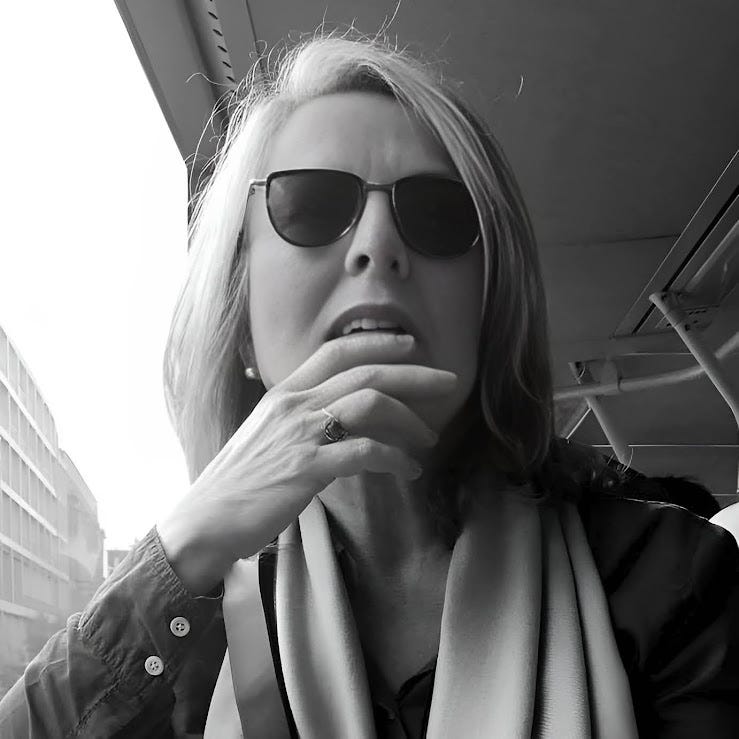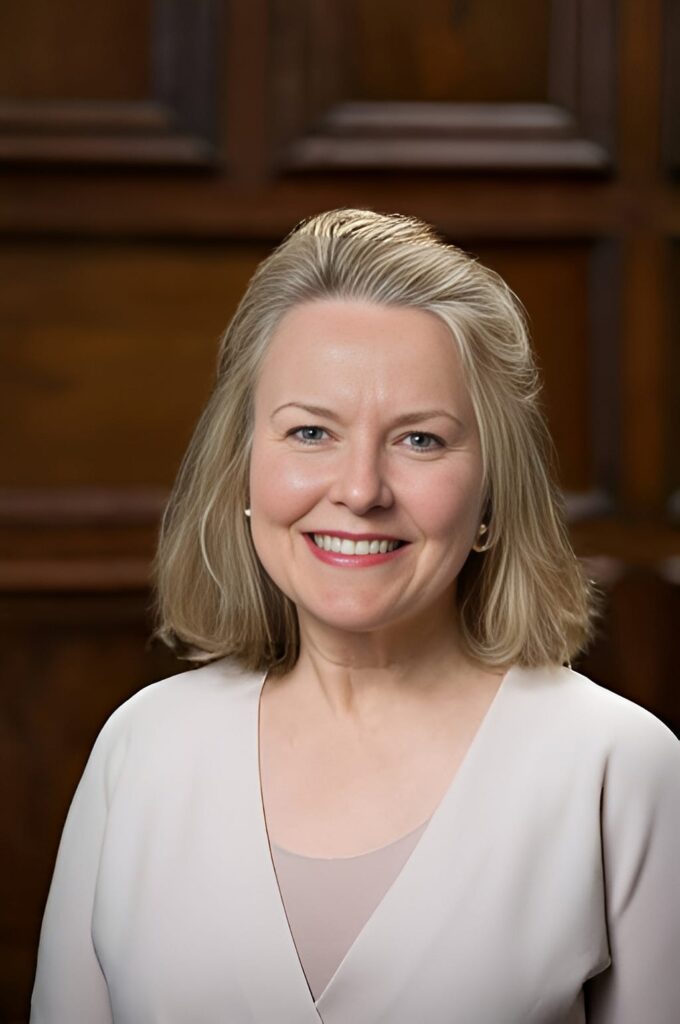…We are trying to change the education system to be more impactful on every individual working in school: students, teaching staff, and administration. We also use art as a way to educate about the importance of restorative justice, sustainable diet, and environmental action…
According to the University of Colorado, “Those who are most affected and have the fewest resources to adapt to climate change are also the least responsible for the greenhouse gas emissions — both globally and within the United States.” Promoting climate justice is an incredibly important environmental responsibility that is slowly becoming more and more recognized. In this interview series, we are talking to leaders who are helping to promote sustainability and climate justice. As part of this series, we had the pleasure of interviewing Diana Wege.
Diana Wege is a New York-based conceptual artist and activist who uses her practice to passionately express the nexus between the environment and social justice. Diana’s conviction comprises the eradication of prevalent violence marring the nation’s schools and beyond. Her work has been shown at galleries and museums across the US, Europe, and Japan.
Thank you so much for doing this with us! Before we dig in, our readers would like to get to know you a bit. Can you tell us a bit about how you grew up?
I was born and raised in the Great Lakes region. My father, Peter Wege, made it his mission to care for the environment, and I feel it is his legacy to address climate change. He felt a calling for environmentalism and a commitment to reforest Costa Rica in the seventies. I grew up going to a convent school and was taught by the same nun in kindergarten as my father. As adolescents, my father wanted my six siblings and I to learn about our country before we traveled the world, taking us to see the redwood forest among other natural wonders. But he wasn’t too pleased when I left for France for two months at the age of 15!
Everyone has a cataclysmic moment or marker in their life which propels them to take certain actions, a “why”. What is your why?
When I was 17 years old, my father took me snorkeling in Honduras. At the time, I thought I knew everything about the world, but I discovered a teeming ecosystem I had until then known nothing about. Later, I learned about the damage to the great barrier reef, a living habitat millions of years old. How could mankind be so recklessly careless? That was definitely a turning point for me in my activism.
You are currently leading an organization that is making a difference for our planet. Can you tell us a bit about what you and your organization are trying to change?
We are trying to change the education system to be more impactful on every individual working in school: students, teaching staff, and administration. We also use art as a way to educate about the importance of restorative justice, sustainable diet, and environmental action.
Can you share the most interesting story that happened to you since you began leading your company or organization?
Once, when I joined a Social Emotional Learning exercise in one of the high schools we work in, the teacher and I became aware that all of the students (all immigrants) had experienced some sort of loss due to violence. We both had a visceral reaction to the realization that we were the only ones who hadn’t. By the end, we were left in tears. She told me she had been teaching English as a second language in the school for fifteen years, and until our nonprofit started working in the school, she had not really known any of her students or been aware of the traumatic experiences they shared.
None of us can be successful without some help along the way. Did you have mentors or cheerleaders who helped you to succeed? Can you tell us a story about their influence?
My environmental science teacher at the University School of Milwaukee, of course my father, marine biologist Sylvia Earle, Peter Jones of the Wilderness Society, and my experience backpacking in Alaska with the National Outdoor Leadership School when I was 17.
Thank you for that. Let’s now move to the central part of our discussion. Let’s start with a basic definition of terms so that everyone is on the same page. What does climate justice mean to you? How do we operationalize it?
My understanding of environmental justice comes from meeting Dorceta Taylor, the author of Toxic Communities, and reading her books. But beyond climate justice for humans, WOVEN encourages justice for animals. We operationalize it through the Peace on Earth Day newsletter, promoting the evolution toward a vegan diet by sharing articles and recipes. All of the menus at our celebrations have been vegan. Another way we promote climate justice is through book art that is based in research into the best practices for the sustainability of peace and the environment.
Science is telling us that we have 7–10 years to make critical decisions about climate change. What are three things you or your organization are doing to help?
One is this exhibit in Venice. Our film combines the values of our two organizations, AIRIE and WOVEN, by using images and sounds of the environment. My work is also being shown in the Jerusalem Botanical Gardens at the Jerusalem Biennale. I am working on a second anthology, following the publication of my book EARTH: The Anthology, that includes twenty-one books that demonstrate the evolution of humans’ diet from eating animals to a plant-based diet. Third, we hope that the continuing presence of our Nurturing Inclusive Community Environment (NICE) coaches in schools will eliminate the need for jails in the future, because everyone will be educated on how to get the help they need to refrain from violence.

Are there three things the community, society, or politicians can do to help you in your mission?
One thing that would help immensely is implementing the NICE program that I described above nationwide in every public school. I also highly recommend that everyone educate themselves by watching the documentaries Cowspiracy: The Sustainability Secret (2014) and Chasing Coral (2017).
How would you articulate how a business can become more profitable by being more sustainable and more environmentally conscious? Can you share a story or example?
By leading by example and serving plant based menus at business events. Many businesses claim to care about the environment but do not recognize the immense and deleterious impact our diet has on the planet’s climate.
This is the signature question we ask in most of our interviews. What are your “5 things I wish someone told me when I first started promoting sustainability and climate justice” and why? Please share a story or example for each.
I wish they had told me to read five books:
- The Jungle by Upton Sinclair.
2 . Animal Liberation Now by Peter Singer.
3 . The China Study (Revised and Expanded Edition) by T. Colin Campbell and Thomas M. Campbell II.
4 . Comfortably Unaware by Dr. Robert Oppenlander.
5 . Animals as Legal Beings by Maneesha Deckha. And two more: The World Peace Diet by Will Tuttle, Ph.D. and The Lost Religion of Jesus by Keith Akers.
Is there a person in the world, or in the US with whom you would like to have a private breakfast or lunch with, and why? He or she might just see this, especially if we tag them. 🙂
Pope Francis. I read all of his encyclicals and think he truly does care about environmental issues, but he is still unaware of the impact industrial farming and fishing has on the environment. He could be advocating so much for animals, certainly with his namesake being St. Francis of Assisi, as well as encouraging healthier diet for Catholics. I think if he encouraged Catholics to stop eating animals, it would have a huge impact on the environment. At one time, my answer might have been the Dalai Lama, but despite having always made peace towards all living things part of his message, the rest of the world seems to ignore him.
How can our readers continue to follow your work online?
On our website, www.wovenow.org, and by joining our mailing list.
This was very meaningful, thank you so much. We wish you only continued success on your great work!
How Artist & Activist Diana Wege Is Helping to Promote Sustainability and Climate Justice was originally published in Authority Magazine on Medium, where people are continuing the conversation by highlighting and responding to this story.
